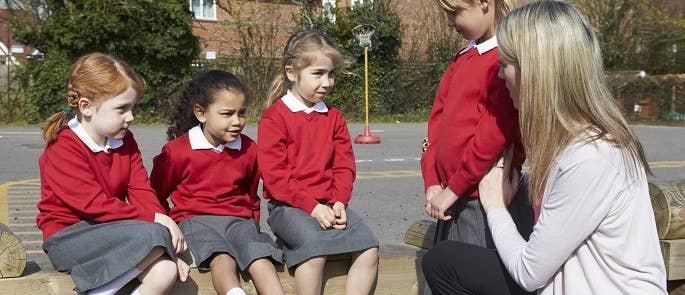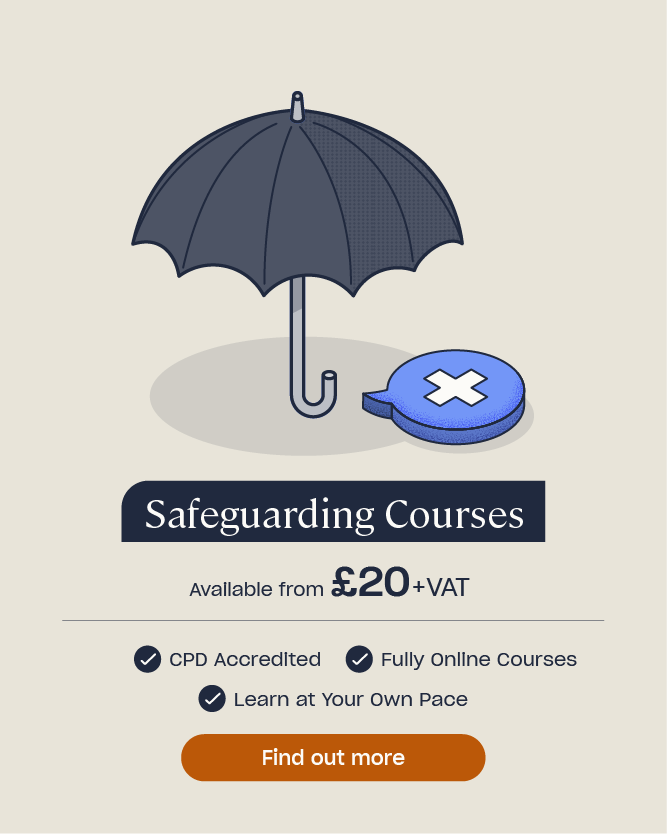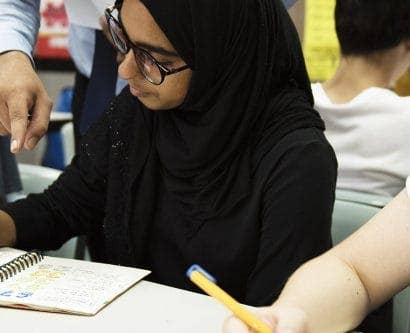What is Restorative Practice in Schools & Social Work?
In recent months, an increasing number of schools and social work settings have been adopting a new behaviour model. This model – restorative practice – encourages people to take responsibility for their actions, and repair any harm that they have caused. Its use has been found to reduce behaviour problems, improve achievement levels, and develop emotional literacy. As a result, it is beneficial to understand what this model is, and how you could use it.
In this article, we will outline what restorative practice is, how it works, and what restorative approaches in schools and social work settings may look like.

What Does Restorative Practice Mean?
Restorative practice – which you might also know as ‘positive discipline’, ‘the responsive classroom’, or ‘empowerment’ – is a strategy that seeks to repair any harm done to people, and relationships that have been damaged. Rather than simply punishing an ‘offender’, it aims to make them take responsibility for their actions, be aware of the consequences they have caused, and feel remorseful.
This is done through meetings with people who have been affected by their actions, who explain the impact that they have had. From the victim’s perspective, these meetings can help them to forgive, move on, and reconcile with the offender.
The practice is based on the idea that dignity, healing, and strengthening a community should be considered when attempting to bring someone to justice. This idea dates back centuries – it can be found in aboriginal teachings and several different faiths. The questions that restorative practice seeks to answer are: ‘Who has been harmed?’, ‘What are their needs?’, ‘Whose obligations are these?’, and ‘How do we collectively work to put things right?’ (Zehr, 2002).
The focus is not on punishment, because punishment is often not enough to deter people from crime or misbehaviour – if it was, these things would not be so prevalent. People also need to learn about the responsibility that they have had in a situation, how it affected other people, and how they can put it right.

It has been found that the restorative approach is extremely effective. Its aim to work with people, rather than doing things to or for them, leads to them feeling heard and involved. As a result, they are more likely to make positive changes in their behaviour. This leads to a reduced likelihood of reoffending, and thus a decrease in crime, violence, and bullying.
The positive results have caused restorative practice to be adopted worldwide, in many different fields. These include criminal justice, organisational leadership, social work, counselling, youth services, and education.
How Does Restorative Practice Work?
Restorative practice is built on a number of key principles that are supported by research. These principles are as follows.
1. Relationships are central to building a community
Studies such as Nathanson (1998) have found that in order to have a good community, we need to sustain positive relationships. This means repairing any harm that has been done, and ensuring that it does not occur again in the future.
2. Everyone’s voices should be heard and valued
Human relationships are healthiest when we express our emotions freely, which reduces the intensity of feelings (Tomkins, 1962, 1963, 1991). We need to have an opportunity to say when something affects us, but we also need to listen to the ‘offender’. Their opinion is unique and still of value; in the words of Morrison (2002), we should “make it clear that the behaviour is not condoned, but at the same time as being supportive and respectful of the individual”.
To put it another way, a person should be separated from their behaviour. Doing so acknowledges that the ‘offender’ may have unmet needs, and these needs are the reason behind their behaviour. Listening and solving the problem ensures that the incident does not reoccur. It also leaves the ‘offender’ with self-respect, dignity, and a sense of belonging in the community.

3. To minimise misbehaviour and crime, you should repair the harm caused, not just punish people for breaking rules
Repairing harm and relationships prevents future harm, as well as restoring trust and strengthening the community.
4. Problem-solving should be collaborative
To make the whole community feel involved and positively motivated, let them all participate. Everyone should discuss the problematic situation that has arisen, and decide on a fair solution. Thinking through the event – including what was right or wrong, and how it could have been handled differently – teaches the ‘offender’ what they should do in future. Consequences that you decide on should be based on the unmet needs of both ‘offender’ and ‘victim’. They should be reasonable, respectful, and related to the offence.
5. Accountability and responsibility lead to change and growth
Learning and understanding the impact of your actions, determining how to fix them, and actually following through with this plan leads to positive self-growth. This process makes the offender feel remorseful, which reduces the likelihood of reoffending.

These principles are applied in practice using different restorative approaches. All of these approaches are centred around restorative language – a shift in the way that we think and speak.
Instead of using retributive language (i.e. language that attributes blame, judgement, or criticism, such as ‘he is rude’, ‘she did it on purpose’, and ‘what have you done?’), we should use language that shows an understanding of the potential needs of the person we are speaking about. Questions such as ‘what’s happened?’ and ‘who’s been harmed?’ acknowledge to the ‘offender’ that there may have been a reason behind their actions.
A full list of restorative question for the ‘offender’ include:
- ‘What happened?’
- ‘What were you thinking about at the time?’
- ‘What have you thought about since?’
- ‘Who has been affected by what happened, and how?’
- ‘How could things have been done differently?’
- ‘What do you think you need to do to make things right?’
For the ‘victim’, these include:
- ‘What did you think when you realised what happened?’
- ‘What impact has the incident had on you and others?’
- ‘What has been the hardest thing for you?’
- ‘What do you think needs to happen to make things right?’
Before you respond to an incident, think about the benefits and risks that each possible response has. If your approach will not help the person to learn from their mistake and avoid it in the future, then it is not restorative and you should try to reconsider your strategy.

After everyone has agreed on a fair solution, the agreement is written down and signed. This allows you to refer back later, and check that it is being carried out as you decided.
Restorative Approaches
In the previous section, we mentioned that there are different types of restorative approaches, all centred around restorative language and attitudes. These approaches include:
Circles
Circles are informal discussions where everyone sits in a circle. These are a good approach to use for ensuring a safe, equal environment – there is no hierarchy in a circle. They allow everyone to have an opportunity to speak and be listened to; one person speaks at a time, with no interruptions, and the opportunity to talk moves around the circle. This can occur sequentially or non-sequentially, as you prefer. It may be helpful to use a talking piece (for example, a small object) to facilitate this process. Circles don’t follow a script, but you may still wish to ask restorative questions, like the ones above.

Restorative Conferences
Restorative conferences are formal, structured meetings. Everyone who is going to attend should prepare in advance. Attendees might only include the people involved in the event and an impartial person (the ‘facilitator’). However, you could also hold a ‘community conference’, where supportive third parties (such as friends, families, and any other necessary community figures) can attend, to address their concerns about the event in the wider community.
In any case, the facilitator should think carefully about the venue, time, date, and seating plan beforehand. You also need to consider the order that people will speak in, and which questions to ask.
Key questions that should always be asked are:
- ‘What happened?’ Allow everyone to tell the whole story from their point of view.
- ‘What were you thinking when …?’ Take the person back to each point in the story to clarify this.
- ‘How were you feeling when …?’
- ‘Who has been affected? How?’ Think deeply about the wider effects, as well as the obvious ones.
- ‘What do you need to move forward?’ Everyone should agree on a fair solution which meets the needs of those involved, and helps them to move on – besides ensuring that a similar event will not happen again.
As with circles, there should be no interruptions when someone is talking in a restorative conference. At the end of the conference, the agreement that you have come to should be written down. You might wish to supply refreshments to solidify the repairing of relationships and add a social aspect (Russell, 2015).

In the next section, we will look at how these general restorative formats can be applied in schools and social work settings.
Restorative Approaches in Schools
Incidents of Bullying
In the classroom, one key area where a restorative approach might be effective is when addressing incidents of bullying. These situations are complex – while many people believe that bullies require punishment, this can be ineffective, or make the situation worse. Bullies might become resentful of the punishment, rather than understanding why they have been given it. Additionally, those who bully often have unmet needs themselves (as do many children who misbehave). They might be using their actions to convey their feelings, rather than words. In order to truly solve the problem, we need to recognise these needs, and discuss how to satisfy them.
In these cases, you could choose to have a small meeting with only those students who are directly involved. However, you might choose to include the whole class in a circle or conference. You should ask the bully to describe what happened, and think about what harm has been done. Then, ask the victim how they have been affected, and what would put things right. Remember not to alienate the bully, or make any generalised remarks about them as a person; it is only their actions at that point that should be discussed.

As mentioned in the previous section, everyone should agree with the proposed solution – including the bully – and should discuss how to prevent something similar from happening again in the future. Afterwards, you should monitor the situation; if it does not improve, you may need to intervene again.
Arguments in the Playground
You could also use restorative approaches in other situations of conflict, instances of disruptive behaviour, or friendship issues. For example, if two students had an argument in the playground, the teacher could help them think about the situation using restorative questions:
- What happened? – ‘I told Emily that I don’t want to be friends with her any more.’
- What were you thinking and feeling when you did that? – ‘I was angry that she wouldn’t play the game I wanted to play.’
- What have you thought about since? – ‘I am upset that she never wants to play what I want to play, but I didn’t mean to make her cry.’
- Who has been affected by what happened, and how? – ‘Emily got upset and started crying, and she sat on her own for the rest of break time.’
- How could things have been done differently? – ‘I could have told Emily that I really wanted to play that game and we could play hers afterwards, or found somebody else to play with.’
- What do you think you need to do to make things right? – ‘I should say sorry to Emily and try not to say anything mean next time, even if she doesn’t want to play.’
Emily would then be asked restorative questions, such as how the incident made her feel and what her part in it was.

Alternatives to Exclusion
Restorative conferences could also be used as an alternative to exclusion (Russell, 2015). This is by no means a ‘soft option’ – having to face up to a group of people that you have affected is much more difficult than simply avoiding confrontation through being excluded (Thorsborne & Vinegrad, 2002).
Traditional methods of discipline can also be counterproductive; for example, sending a child out of the room for being disruptive in a lesson that they don’t like gives them what they want – a way out of the lesson. It is better to make the child think about why they behave in that way, what the underlying problem is, and how it can be solved.
Additionally, even if a serious incident occurs, and you have to give the student a formal punishment, consider having a restorative conversation as well. This helps the child better understand how they have affected others.
General Classroom Use
Restorative practice also has a place in informal comments that you make in the classroom. For example, you could make an affective statement (‘when you disrupt the class, I feel disappointed’) or ask an affective question (‘who do you think has been affected by what you just did? How do you think they’ve been affected?’). This allows the student to think about their behaviour, and change it in the future (Morrison, 2003).
Through modelling restorative language, you can teach your students to express their feelings, and to be aware of others’ needs. Moreover, the more informal practices you use, the less you will need to perform time-consuming formal restorative practices.

Finally, you could consider giving your students the opportunity to act as peer mediators. Peer mediators help younger children in the school to resolve issues and disputes by acting as the facilitator. This gives them valuable lifelong skills. However, you would need to train the student beforehand, and support them throughout.
Restorative Approaches in Social Work
Restorative practice ties in well with social work; it comes under the popular relationship-based practice, which has been increasingly embedded across children’s services to improve the consistency of approaches and outcomes for children and families. Recent social work developments – such as the Making Safeguarding Personal agenda and the Care Act 2014 – have made restorative practice an appealing option.
Additionally, the aims and values of social work align well with those of restorative approaches. These approaches allow social workers to create a supportive, respectful environment for individuals to share their feelings and take responsibility – an environment where the individuals themselves problem-solve and decide how they can move on. As a result, you empower the families, and let them develop their skills. Rather than the facilitator having to control the process, they are a partner or collaborator.

Family Group Conferencing
An example of a restorative approach in social work settings is family group conferencing (FGC), which might also be referred to as family group decision-making (FGDM). This originated in New Zealand in 1989, for families planning to protect children from further violence and neglect or residential placement outside their home.
In this approach, social workers and other professionals organise the conference, where they tell the family (and anyone else in their support network) about the government’s expectations and the resources available to them, and then leave the room. They do not give the family any ideas about what the outcome of the conference should be.
The family is left alone to decide on their own plan for the future of the child – or, in some cases, adult – and professionals evaluate the plan later to see whether it meets safety and legal guidelines. Professionals might also help the family acquire the resources they need to put the plan into place. Afterwards, they monitor the progress of the plan with the family, and may hold follow-up meetings.
As a result of this approach, the family takes responsibility for their own loved ones. This respects their rights and potential strengths in a way that no previous government method can (Smull, Wachtel, & Wachtel, 2012).

The reason this is effective is that young people need to feel stable and have a sense of community and identity – only their family can give them this. Additionally, families are more likely to look for solutions that involve their own family members, rather than professionals or the government. Empowering families to fix their own problems also facilitates healing (Rush, 2006).
Instances of FGC where the young person has committed an offence are slightly different to those focusing on welfare. In these cases, the conferences look at the offence and the harm done, and a trained facilitator leads the discussion. The victim and any affected members of the community attend the conference and participate in the discussion. The offender’s family and support system are also present. Everyone who is present helps to decide on the appropriate punishment for the offender.
These instances mirror the regular restorative approaches discussed in the previous section, and use restorative questions throughout.
What Are the Benefits of Restorative Practice?
The benefits of restorative practice are numerous, and supported by research findings.
Benefits in Schools
Implementation of restorative practice across the whole school (including all staff and pupils) can contribute to a safer, happier, more effective learning environment. It can also reduce the number of bullying incidents – a report published by the Department for Education (2011) shows that 97% of schools rated restorative approaches as effective in preventing bullying.
Similarly, studies such as the 2009 independent evaluation of the Restorative Solutions’ Restorative Approaches in Schools (RAiS) programme in Bristol found that restorative practice improved school attendance and reduced exclusion rates. It can also improve achievement levels.

Besides this, restorative practice teaches children and young people about the impact of their choices on others, and helps them to develop empathy, responsibility, and emotional literacy. This leads to improved self-discipline and better decision-making, which can have an effect throughout their lives. The focus on building and maintain relationships creates better relationships between children and staff.
Benefits in Social Work Settings
Using restorative practice creates a more respectful, relational environment, where people feel supported. FGC, in particular, leads to better outcomes, less conflict with professionals, more informal support, and improved family functioning (Merkel-Holguin, Nixon, & Burford, 2003). For example, authorities that have implemented this approach have achieved high success rates with ‘troubled families’, and have seen a reduction in need for Child in Need and Child Protection plans.
Another benefit of restorative practice is its cost-effectiveness in social work settings, which makes it a sustainable model to be used now and in the future.
Restorative practice is an effective way to reduce disruption, conflict, and misbehaviour in schools and social work settings. Its many benefits have led to the approach becoming popular worldwide. This article has given you an overview of the principles and formats that restorative practice can take, and we hope that this helps to enhance your knowledge of the model. It is certainly one to consider adopting, if you have not already.
Further Resources:
- Safeguarding Training Courses
- How to Deal with Challenging Behaviour
- Designated Safeguarding Lead: A Resource Pack
- What is the Toxic Trio?











